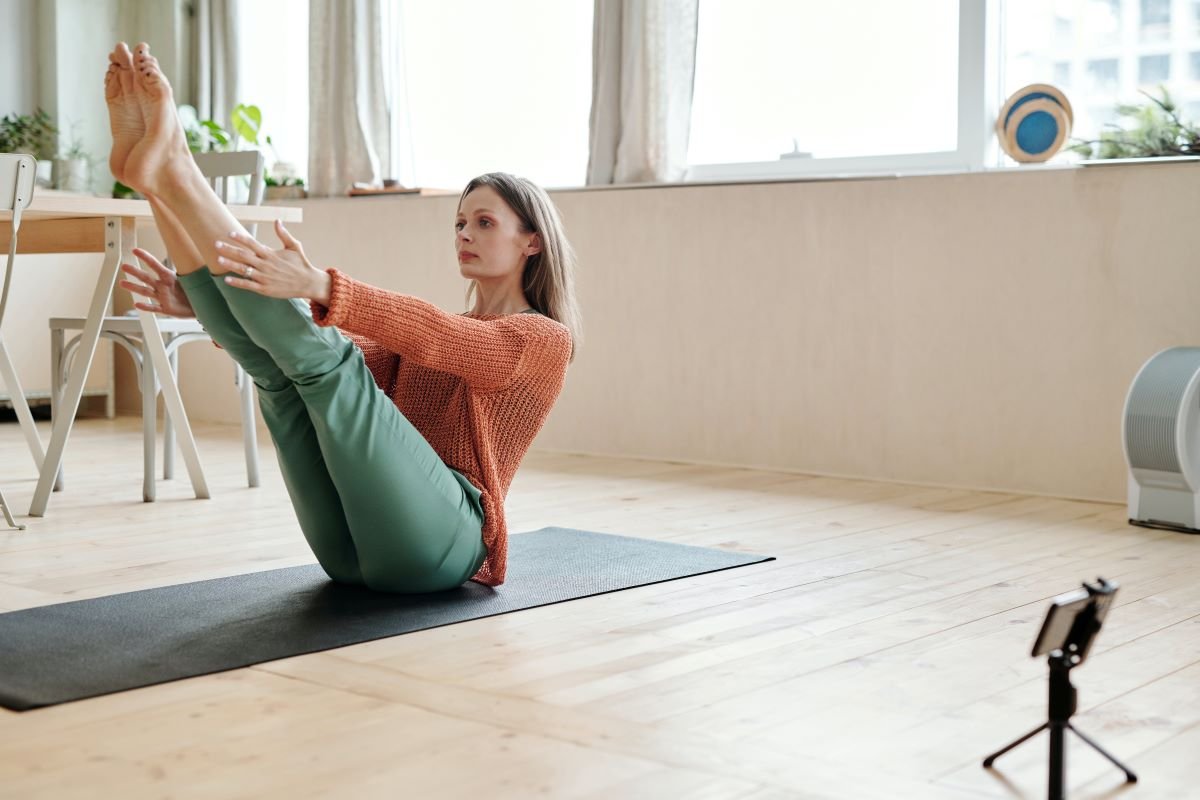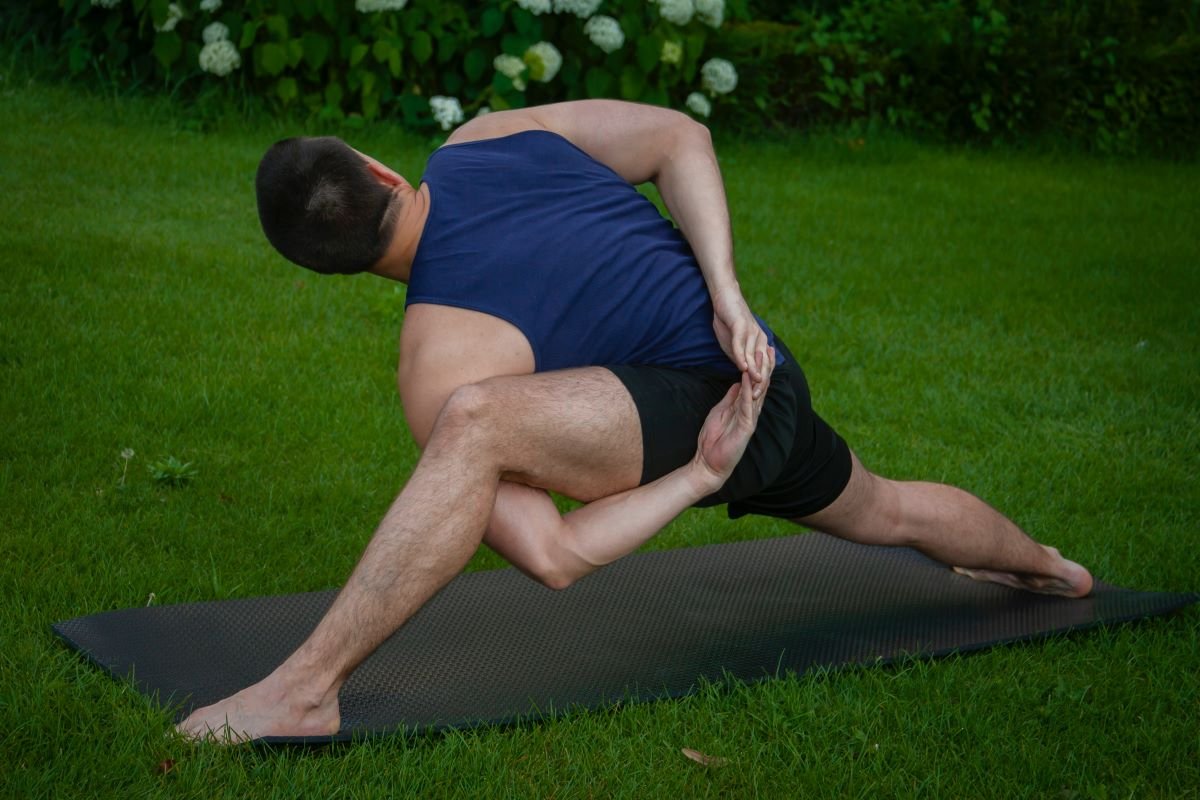Flexibility, mobility, balance, and core training are essential components of a well-rounded fitness regimen, contributing to overall physical health and agility. These types of training prepare the body for movement, improving endurance, strength, and flexibility.
Individuals can aim for holistic and sustainable fitness levels by focusing on these aspects.
Importance Of Flexibility, Mobility, Balance, And Core Training
Flexibility, mobility, balance, and core training are crucial in maintaining overall physical health and well-being. These fundamental elements form the foundation for a strong and resilient body, aiding injury prevention, enhancing athletic performance, and promoting functional movement patterns. Understanding the significance of these components is essential for achieving optimal physical fitness and vitality.
Understanding The Fundamental Elements
Flexibility refers to the ability of muscles and joints to move through a full range of motion. Mobility encompasses the body’s ability to perform movements without any restrictions easily. Balance is the ability to maintain stability and control during various activities. At the same time, core training focuses on strengthening the abdomen, lower back, and pelvis muscles to provide stability and support for the entire body.
Impact On Overall Physical Health
Integrating flexibility, mobility, balance, and core training into a fitness regimen can significantly impact overall physical health. Improved flexibility and mobility contribute to enhanced joint function, reduced risk of injuries, and better posture. Balance training helps prevent falls and enhances coordination, while core training supports spinal health, improves posture, and enhances athletic performance. Research has demonstrated that incorporating these elements into exercise routines leads to better functional movement patterns, increased muscle strength, and improved physical performance. Therefore, prioritizing flexibility, mobility, balance, and core training is vital for optimal physical health and well-being.
How To Train Mobility And Flexibility
Embarking on a journey to improve mobility and flexibility is not just about achieving impressive splits or mastering complex yoga poses; it’s about enhancing your overall well-being and unlocking your body’s full potential. This comprehensive guide will explore the intricacies of training mobility and flexibility, breaking down the science behind it and providing practical tips to incorporate into your daily routine.
Understanding Mobility and Flexibility:
Mobility vs. Flexibility:
Before delving into the training methods, it’s crucial to distinguish between mobility and flexibility. Mobility refers to the range of motion within a joint, encompassing muscles, ligaments, and tendons. On the other hand, flexibility is the ability of muscles to lengthen during movement. A holistic approach involves addressing both aspects to achieve optimal results.
Training Strategies:
Dynamic Stretching:
Dynamic stretching involves moving parts of your body through a full range of motion, gradually increasing the speed and reach of the movements. This type of stretching is ideal for warming up before exercise as it helps to activate muscles and improve circulation. Incorporating dynamic stretches into your routine can prepare your body for more strenuous activities.
Static Stretching:
Unlike dynamic stretching, static stretching involves holding a position for an extended period, allowing the muscle to lengthen. While static stretches are best performed after a workout to improve flexibility, it’s important not to neglect them. Engaging in static stretches regularly can lead to increased muscle elasticity and joint range of motion over time.
Mobility Exercises:
Mobility exercises enhance joint movement and can include specific drills targeting various body parts. Incorporating mobility exercises into your routine can improve joint stability, reduce muscle imbalances, and improve overall functional fitness. Examples include hip circles, shoulder dislocations, and ankle rotations.
Yoga and Pilates:
The ancient practices of yoga and Pilates offer a holistic approach to mobility and flexibility training. These disciplines not only emphasize stretching but also incorporate strength and balance exercises. Regular participation in yoga or Pilates classes can lead to increased body awareness, improved posture, and a greater sense of overall well-being.
Creating a Balanced Routine:
Consistency is Key:
Regardless of the methods chosen, consistency is paramount. Developing a daily or several times-a-week routine is crucial for seeing tangible improvements in mobility and flexibility. Make it a habit to prioritize these exercises, just like any other aspect of your fitness regimen.
Listen to Your Body:
While pushing your limits is essential for progress, listening to your body is equally important. Overtraining or forcing your body into positions it’s not ready for can lead to injuries. Pay attention to how your body responds to different exercises and adjust accordingly.
Gradual Progression:
Achieving lasting results in mobility and flexibility requires patience. Set realistic goals and focus on gradual progression. Celebrate small victories along the way, and understand that true transformation takes time. Embarking on a journey to improve mobility and flexibility is an investment in your overall health and well-being. By incorporating a balanced mix of dynamic stretching, static stretching, mobility exercises, and practices like yoga and Pilates into your routine, you can unlock your body’s full potential. Remember, consistency, listening to your body, and gradual progression are the keys to success on this rewarding journey towards enhanced mobility and flexibility.

Benefits Flexibility And Mobility Training
In the fast-paced world we live in today, where demands on our bodies and minds are constant, the importance of flexibility and mobility training cannot be overstated. This comprehensive approach to fitness extends far beyond the confines of traditional workouts, offering myriad benefits that reach into every aspect of our daily lives. From improved posture to increased range of motion, flexibility and mobility training is a holistic solution that fosters physical and mental health. In this exploration, we delve deep into the various facets of this transformative practice, uncovering the unparalleled advantages of embracing flexibility and mobility training.
- Enhanced Range of Motion: Flexibility and mobility training work to unlock the body’s full range of motion, allowing individuals to move more freely and efficiently. By incorporating dynamic stretches and targeted exercises, joints and muscles become more pliable, reducing the risk of injuries and enhancing overall athletic performance. Whether you’re an athlete looking to optimize your game or an office worker striving for increased comfort in daily activities, an enhanced range of motion is a universal benefit that can positively impact everyone.
- Improved Posture and Body Alignment: In our modern, sedentary lifestyles, poor posture has become a pervasive issue, leading to various health problems. Flexibility and mobility training address this concern head-on by targeting key muscle groups responsible for maintaining proper posture. Through stretching and strengthening exercises, individuals can realign their bodies, alleviating strain on the spine and promoting a more upright and balanced stance. Improved posture enhances physical appearance and plays a crucial role in preventing chronic pain and musculoskeletal issues.
- Injury Prevention and Rehabilitation: One of the benefits of flexibility and mobility training is its role in preventing injuries and aiding in rehabilitation. A flexible and mobile body is less prone to strains, sprains, and other common injuries. Moreover, targeted flexibility exercises can accelerate the healing process by promoting blood circulation, reducing stiffness, and preventing muscle imbalances for those recovering from injuries. As a proactive and reactive approach to injury management, incorporating flexibility and mobility training into your routine is a wise investment in your long-term well-being.
- Stress Reduction and Improved Mental Health: The mind-body connection is fundamental to flexibility and mobility training. Engaging in these exercises not only releases physical tension but also has a profound impact on mental well-being. Stretching and mobility exercises stimulate the release of endorphins, the body’s natural mood enhancers, promoting relaxation and reducing stress levels. The meditative quality of many flexibility routines also provides a mental escape, allowing individuals to disconnect from the pressures of daily life and cultivate mindfulness.
- Versatility in Training Methods: Flexibility and mobility training offers diverse methods and techniques suitable for individuals of all fitness levels and preferences. There are many options, from yoga and Pilates to dynamic stretching routines and mobility drills. This versatility ensures that everyone can find a style of training that aligns with their goals and suits their lifestyle. Whether you prefer the tranquillity of yoga or the dynamic movements of mobility exercises, the adaptability of flexibility training makes it accessible and enjoyable for all.
- Enhanced Athletic Performance: Athletes across various disciplines recognize the pivotal role of flexibility and mobility in optimizing performance. Greater flexibility allows for a more extensive range of motion, facilitating improved agility, speed, and coordination. Additionally, enhanced mobility ensures that joints can move through their full capacity, reducing the risk of injuries during high-impact activities. Incorporating flexibility and mobility training into athletic routines is a proven strategy for gaining a competitive edge and prolonging an athlete’s career.
- Longevity and Quality of Life: Flexibility and mobility training contribute significantly to an individual’s longevity and quality of life. Maintaining flexibility becomes increasingly vital as we age to preserve independence and prevent age-related ailments. Regularly engaging in flexibility exercises promotes joint health and combats muscle stiffness. It supports overall mobility, allowing individuals to lead active and fulfilling lives well into their later years.
The benefits of flexibility and mobility training extend far beyond the confines of traditional fitness routines. From the physical advantages of an enhanced range of motion and improved posture to the profound impact on mental health and stress reduction, incorporating flexibility and mobility exercises into your daily routine is a holistic approach to well-being. The versatility of training methods ensures that individuals of all ages and fitness levels can reap the rewards, making it an inclusive and accessible practice. As we navigate the demands of our modern lives, embracing flexibility and mobility training is not just an investment in physical health but a pathway to a more balanced, resilient, and fulfilling life.

I am Jahirul Islam. I am a physiotherapist and I have a lot of experience in this field. I want to share my experience with you. You will be by my side. Good luck for everyone..


